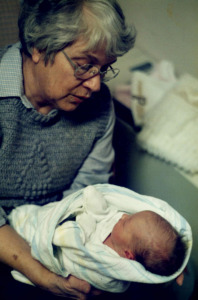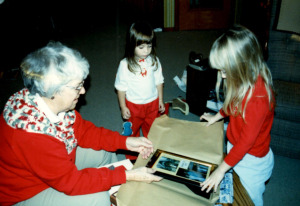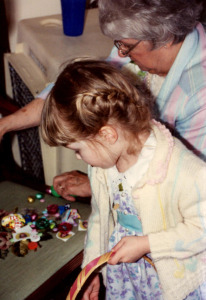Architectural Storytelling: the legacy of design
When I think of storytelling, I recall memories of bedtime stories with my Grandma T. Either being read to from a Hans Christian Andersen book (and enjoying the illustrations) or listening to her tell stories of life out on the farm in Kansas: chasing chickens, dealing with cows, and stick jumping over creeks — the “olden day pole vault” as she called it. These stories, while being hundreds of years apart, gave me a sense of both the place and time. They were the essence of storytelling.
When Ray Charles wrote “Unchain My Heart” or Johnny Cash sang “I Walk the Line,” we inherently knew they were telling stories from their lives. They were sharing experiences. Whether we could relate or not, the quality of their stories caused them to stick with us even years later. The stories resonate even with those hearing them for the first time. Their music is their legacy.
In the architectural profession, building are our stories and become our legacies. Authors have written compositions. Musicians have songs. We have the design of our structures. The Architects of the past created structures as legacy. They were buildings of honor, of thoughtful design and construction, because they valued the time and material required for the creation of the structures.
What’s changed?
I don’t see any of us running around saying:
“I have so much time! What will I do with all of this time?!”And *most* of us have a good grasp that a majority of materials are finite resources. There is a larger dialogue about the industrial revolution making materials more readily available and creation of goods occur more quickly, but there has still been quality design created after that — albeit rare — compared to the entire catalog of buildings designed post-revolution.
Personally, I think the sense of legacy has changed. Ironic in that most “starchitects” — or those hoping to achieve such a level in our field someday — design flashy pieces to be seen and make a name…evidently just not for more than 15-20 years. Their legacy is the flash of their design.
So what story are we telling with that change? What are we showing the public when, as a profession, the “legacy” we create is responsible for about half of US energy emissions? When our new, flashy buildings are only built to last for 40 years? As it stands, the Bird’s Nest from the 2008 Olympics will be lucky to make that time frame. It is only 6 years old and already vacant and crumbling. 40 years without a major overhaul will be a miracle.
It’s worth comparing that the Pantheon is a little under 2000 years old, Angkor Wat is over 1300 years old, and the still functioning Mezquita de Cordoba is over 1200 years old. Those are signature buildings, but across Europe cities are thriving within buildings over 100 years old. While they may not have been designed with as significant a purpose as the Pantheon, they leave a legacy through quality, having withstood the test of time, and now tell their own story.
How do we tell the general public to respect our profession, much less hire us, when we make buildings that almost instantly leak and quickly decay?How do we create a legacy of future professionals — who will have to study past work as a part of their schooling — when buildings of late are en route to the landfill or are major energy hogs?
“Alright, kids, we’ll have to look at pictures from the grand opening because the building has been condemned and deemed unsafe for us to tour.”Or
“Ok, gang. Take note. Here’s what NOT to do.”Where do we go?
I realize that most who are reading this are the ones seeking to right the ship. To correct the errors of others and create quality, meaningful design, respectful of the environment, materials, and users.
The onus is – quite literally – on US to create a legacy, a story, that is told louder and longer than the bad design of the past and present. We can’t change those things, but the future is ours.
What is the story of your legacy?
To see what others thought of when they heard “Architectural Storytelling,” follow the links to the others in the #ArchiTalks group who are posting today on the theme: Bob Borson – Life of an Architect (@bobborson) “Architectural Storytelling – It’s My Thing” Jeff Echols – Architect of the Internet (@jeff_echols) “Architects can Improve Their Marketing by Incorporating Storytelling” Mark R. LePage – Entrepreneur Architect (@EntreArchitect) “AE048: Success Through Storytelling with Bob Fisher of DesignIntelligence” Marica McKeel – Studio MM (@ArchitectMM) “Take Time to Tell Your Story” Lee Calisti – Lee CALISTI architecture+design (@leecalisti) “Architecture as Storytelling” Evan Troxel – TRXL (@etroxel) “It’s Their Story” Enoch Sears – Business of Architecture (@businessofarch) “The Secret Ingredient To Convincing Anyone To Do (Almost) Anything” Matthew Stanfield – FIELD 9 Architecture (@FIELD9arch) “Stories in Architecture” Cormac Phalen – Archispeak Podcast (@archy-type) “The Generational Story – Architecture as Storytelling” Nicholas Renard – Cote Renard Architecture (@coterenard) “The Story of a Listener” Jeremiah Russell – r|one studio architecture (@ronestudio) “architectural storytelling : #architalks” Collier Ward – Thousand Story Studio (@BuildingContent) “Architecture and Storytelling are Forever Linked” Andrew Hawkins – Hawkins Architecture, Inc (@HawkinsArch) “Architectural Story Books” Jes Stafford – Modus Operandi Design (@modarchitect) “Architectural Storytelling – Discovery of a Passion”








